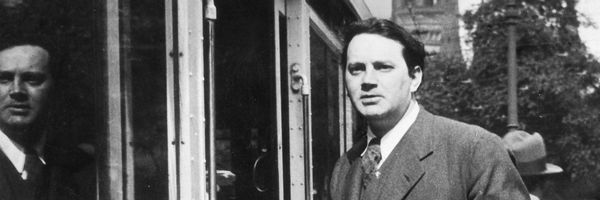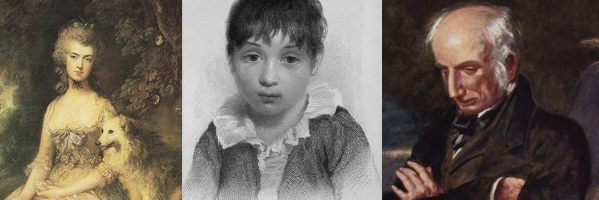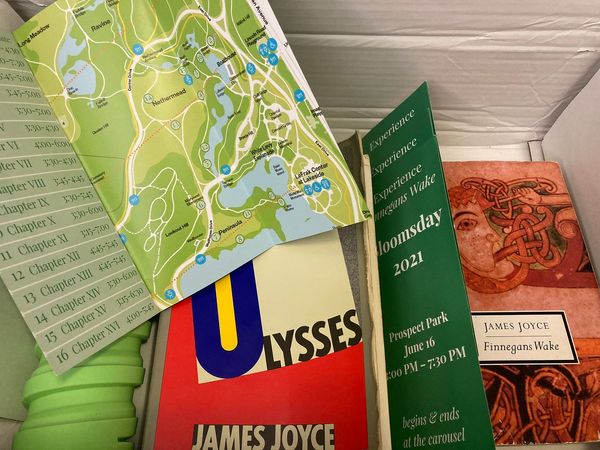Scorn not the E-Poem

Explaining "generative poetry" without demonstration is harder than explaining the plot of Finnegans Wake, but adapting a generative poem with one's own original text is easier than writing a haiku.
The device you are reading on right now is capable of much more than writing static text in a page format, but this is so ignored that it is exceedingly difficult to understand concrete examples of what that could mean when presented in the abstract. Many such possibilities of writing and reading on a screen, meanwhile, are far more immediately accessible than you might expect.
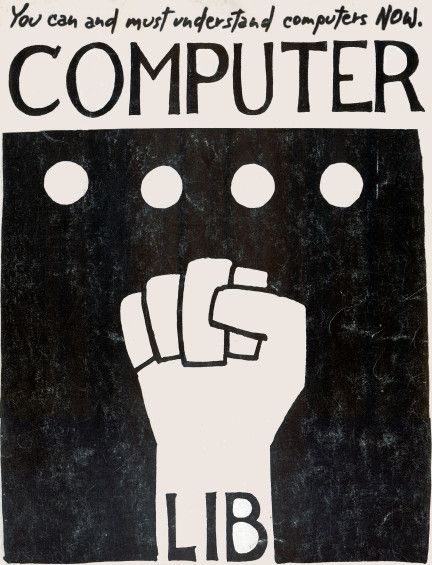
On the cover of Computer Lib, Ted Nelson writes, "You can and must understand computers NOW." This was 1974. Christopher Strachey had already written Love Letters, an algorithm for the Manchester Mark 1 computer, in 1952. Another good time to understand computers – and electronic poetry – would be now.
The Sonnet
William Shakespeare published his sonnets in 1609. John Donne and John Milton publish their own sonnets over the coming decades. Fast-forward two centuries and John Keats publishes his famous sonnets in 1816 and 1817. Percy Shelley's beloved "Ozymandias" – "Look on my works, ye Mighty, and despair!" – is published the following year.
What, then, could William Wordsworth mean in 1827 by beginning a sonnet in the following way?
Scorn not the Sonnet; Critic, you have frowned,
Mindless of its just honours
From our present perspective, looking back on the past few hundred years of the vast poetic tradition in English, it seems odd to imagine there are any critics out there frowning and scorning the sonnet form. Donne chastises Death's pride, Keats relays "fears that I may cease to be," and then, in the United States, a sonnet was quoted inside the Statue of Liberty in 1903. Terrance Hayes just published a very well-received collection of sonnets in 2018. Literary history is often seen in the form of a wide look down its hallowed halls, not a close look at its texture.
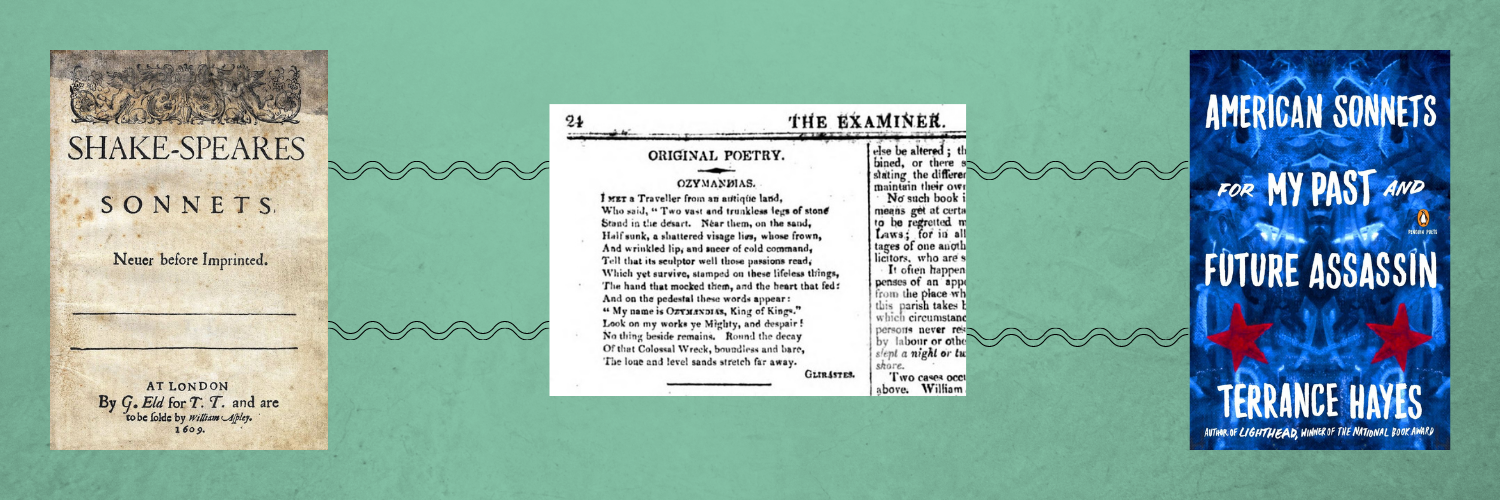
Kenneth H. Ober and Warren U. Ober found this dismissal in the 1803 English Annual Review: sonnets are "at best ... stiff difficult trifles, and surely more remote from the simplicity which they often affect than any other class of poems in our language." What is missing in the long look at poetic history is that between Milton and 1803, there was a long period in which the sonnet fell out of favor. Canonization of these Romantic sonnets (not least due to excellent writing) secured the form a renewed prominence.
The historical texture here, however, contains a little further notable detail. The sonnet revival began in the latter half of the 18th century. An important work here is Charlotte Smith's 1784 Elegiac Sonnets. Bishop C. Hunt, Jr. notes that "Between 1780 and 1800 British poets wrote upwards of 2500 sonnets." He goes on to note that Elegiac Sonnets in particular "helped to establish the sonnet as a proper vehicle for expression of melancholy and sorrowful meditation."
That shows how a form can fade out of use, then come back in a big way, but return most popularly within a new type of approach. In defending the sonnet form in "Scorn not the Sonnet," Wordsworth cites Petrarch, Tasso, Camões, Dante, Spenser, and Milton, while also writing sonnets more immediately formed by Smith.
This sort of texture is rarely considered among the general reading and writing public, but it is through the same sort of texture that our reading and writing practices have been, and will continue to be, shaped. If you are serious about reading and writing into the future, you should apply the same sort of mindset forward.
The E-Poem
In a small poll I ran recently, 80% of respondents thought that at least some of the most prominent works of poetry in the 2040s would require some sort of computer to read. If you believe this, do not wait until then to start making sense of such writing. By then, you will need to catch up on nearly a century of writing.
If you make a habit of reading contemporary poetry, or contemporary fiction, why arbitrarily discard huge swaths of writing which will inevitably be seen as a crucial part of literary history? If you write today, you might look up to the great writers of the 19th century, but you need not limit your capacity to write to what a 19th century poet could do on paper.
As we inherit the sonnet form, you likely understand the gist of what a Shakespearean sonnet might entail: fourteen lines, quatrains, a couplet, iambic pentameter, a certain rhyme scheme. At some point in the poem, there is a conceptual turn. Being able to consistently pull off all that can be a challenge, though Wordsworth argues in another sonnet that such constraints are actually freeing.
A challenge you do not have, though, is inventing the sonnet. This form is given to you. It has certain qualities suggested by other writers – as with the influence of Smith – though you can always move in radically new directions.
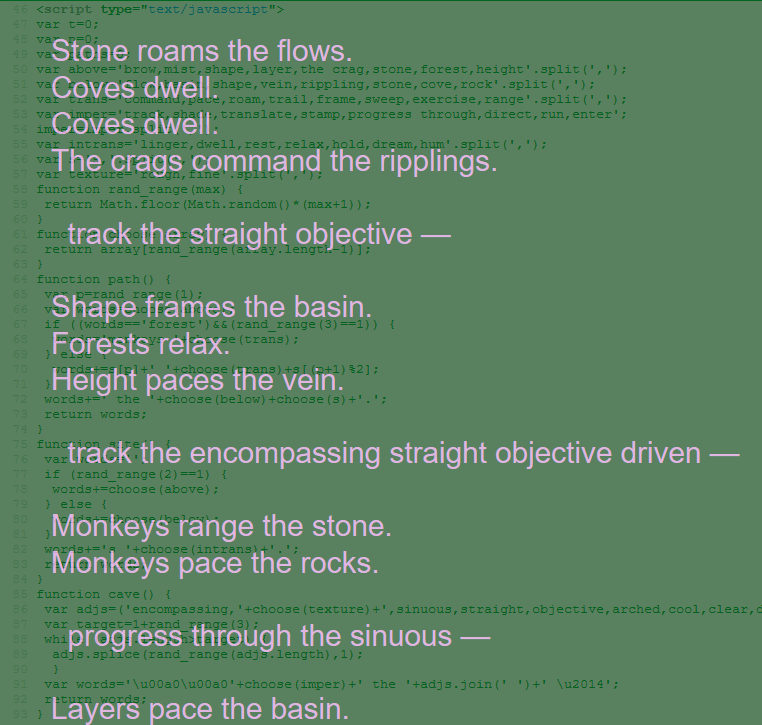
In a similar way, you do not need to create a whole original program for a digital poem. You can take an existing model and adapt it with your own text. There are a few minor considerations, but the process is overall simple (while still offering plenty of long-term room to grow and experiment). The Electronic Literature Organization's collection of Taroko Gorge remixes shows several ways in which one given form can be reworked into deeply original texts with varying degrees of formal alteration.
It is easy to see generative poetry as, like sonnets, "stiff difficult trifles." I encourage you to try to see it like the way we see sonnets today rather than as with some resistant critics in 1803.
Working with such text is not easy to explain in a generalized way. I wrote a thorough guide a few months ago, but this does not cover what to write and what sorts of writing such forms might promote. The benefit of a social context is fostering a quicker and easier demonstration of how this all works, and brainstorming with creative and intellectually curious peers some of the endless possibilities newly opened up.
Any of you reading this could learn how to read and work with something like the above image.
Works Cited:
Hunt, Bishop C. “Wordsworth and Charlotte Smith: 1970.” The Wordsworth Circle, vol. 35, no. 2, 2004, pp. 80–91. JSTOR, www.jstor.org/stable/24044971. Accessed 22 Jan. 2021.
Ober, Kenneth H., and Warren U. Ober. “‘Scorn Not the Sonnet’: Pushkin and Wordsworth.” The Wordsworth Circle, vol. 34, no. 2, 2003, pp. 119–126. JSTOR, www.jstor.org/stable/24044955. Accessed 22 Jan. 2021.



